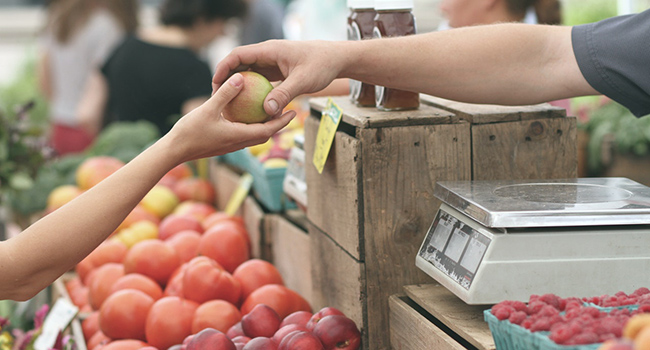 Prior to the COVID-19 pandemic disrupting supply chains and impacting purchasing habits, our relationship with food was different.
Prior to the COVID-19 pandemic disrupting supply chains and impacting purchasing habits, our relationship with food was different.
The pandemic has pushed governments to consider food autonomy as a priority and to look more at local supply chains. Discussions are about producing food in Canada, year-round, while offering products to consumers at reasonable prices, especially produce.
A recent study conducted by Dalhousie University was designed to gauge consumer willingness to pay for locally-grown food, as well as the perceptions of greenhouse-grown crops, what factors people consider when purchasing produce, where people purchase their produce, and how important fruits and vegetables are to their diets.
Several publicly-funded campaigns have assumed most Canadians think of local the same way. This just isn’t so. The report suggests consumer definitions of local vary greatly across the country.
In the Atlantic and Prairie provinces, most respondents stated that if food is grown within the province, it’s considered local. Consumers in British Columbia, Ontario and Quebec are more likely to consider only food grown within their region to be local.
Prince Edward Island residents consider where produce is grown more than the rest of Canadians, with 38.4 per cent of respondents saying they consider where their produce comes from important when choosing fruits and vegetables at the store.
One of the key points of the study is about pricing. When deciding what fruits and vegetables to buy, 79.5 per cent of Canadians are willing to pay a premium for locally-grown produce when grocery shopping.
However, only one in four Canadians consider where food is grown as important when grocery shopping. This is what’s known as the local food paradox. Most of us want to pay more for locally-grown food and will respond so during a survey, but few are actively looking for opportunities to do so.
Price, unsurprisingly, is the most common important factor for Canadians, with 47.8 per cent citing the price of fruits and vegetables is most important. That’s a significant barrier.
Essentially, Canadians may value local food more and think it’s worth more money, but that doesn’t mean they’re looking for it.
The good news is that controlled-environment agriculture, like greenhouses, appear to have potential.
Offering some level of food autonomy to Canadians will require more use of production technologies. Most respondents to the survey perceive crops grown in greenhouses to be the same quality as those grown conventionally, with 63.4 per cent saying they’re the same quality, 27.4 per cent saying they’re better and only 9.2 per cent saying they’re worse.
Only among respondents who grew their own produce did more people say greenhouse-grown produce was worse than those saying it was better, with 24.7 per cent claiming it was worse compared to 15.9 per cent saying it was better than conventionally grown.
Those who shopped at independent stores had the highest opinion of greenhouse-grown crops, with 38.9 per cent saying they were better compared to 8.8 per cent saying they were worse.
Expecting Canadians to buy local, and perhaps pay a little more to support the ‘local economy,’ in the best of times – let alone during a recession – is simply unreasonable. Supporting our farmers and the rural economy is critical, but many consumers are struggling financially.
Once we make retail prices a non-issue, local produce will have a fighting chance against imported alternatives.
Given that the new Canada’s Food Guide recommends that half of our diet be focused on fruits and vegetables, our food economy is particularly vulnerable, especially between November and May. Climate change, wildfires, pests, currency devaluations and many other things can compromise our food affordability when the core of our produce in the winter comes from abroad.
Many provinces have awakened to this reality since the start of our COVID-19 adventure. Ontario, Quebec, New Brunswick, Alberta and British Columbia have all been quite active in looking for opportunities to increase their domestic production for the entire calendar year.
Given its high-volume, low-margin nature, investments in agri-food aren’t compelling compared to other sectors of our economy. To move the needle on capital, government involvement is vital.
Let’s hope it doesn’t stop once we’re done with this pandemic.
Dr. Sylvain Charlebois is senior director of the agri-food analytics lab and a professor in food distribution and policy at Dalhousie University. Shannon Faires is a research associate at the Agri-Food Analytics Lab, Dalhousie University.
Sylvain is a Troy Media Thought Leader. Why aren’t you?
The views, opinions and positions expressed by columnists and contributors are the author’s alone. They do not inherently or expressly reflect the views, opinions and/or positions of our publication.


